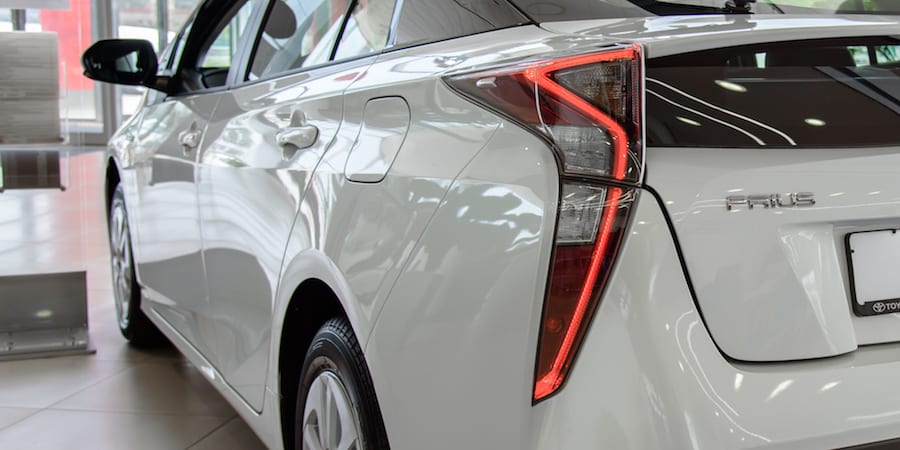
An NGO uses lean principles to rebuild New Orleans
CASE STUDY – Following one of the deadliest hurricanes in US history, an NGO started to use lean management principles to speed up the reconstruction of homes in the Louisiana city… and the results were impressive.
Words: Zack Rosenburg, Co-Founder and CEO, St. Bernard Project
Copyright of main picture: Brian Nolan
Nine years ago, when my wife and I arrived in New Orleans, we found total devastation. Hurricane Katrina had hit six months before, but it looked like a bomb had just gone off.
We were there to help, but were afraid we had missed the recovery because of the 20+ organizations we had called, only one had accepted to have us – the St. Bernard Parish. The recovery had to be almost complete, we thought – after all, this is the city one third of US oil travels through!
The disaster-recovery experts told us that the time needed for New Orleans to fully recover from this disaster would be estimated at 15-20 years. When we arrived, we were struck by the huge impact the storm had had on the population (126,000 homes were either severely damaged or destroyed). People were sleeping in garages, attics and cars.

We were initially going to stay for a couple of weeks and then go back to our jobs in D.C. And we did, for three months, before we quit and went back to Louisiana. In August, we founded the St. Bernard Project - we named it after the parish where we had worked, in which 100% of residences were uninhabitable - with the goal of rebuilding houses for the families who had owned a home before Katrina (some 60,000 across the city).
We also bring our rebuilding and repairing efforts to Joplin, Missouri, destroyed by the a tornado in 2011, and to New York and New Jersey communities hit by Hurricane Sandy.
FIRST STEPS TOWARDS LEAN
In the first year or so, we were doing pretty well, having rebuilt 88 houses by the end of October 2007. We were rebuilding more than any other non-profit organization in the area, and we were even receiving awards for it. We went on working in the same way for years.
At one point, we started to notice we were not getting better. We had hit a plateau. It was our heart-felt belief that in the people-serving world you always have to do better, and when someone suggested I look up lean thinking I immediately I thought I finally had the opportunity to break a situation that felt static. [Planet Lean recently published an interview with another great not-for-profit organization, Food Bank For New York City.]
I contacted TSSC and soon set up a meeting. Mark Reich, now COO of Lean Enterprise Institute, came down to see us. During a meeting with our people, he asked if we talked about problems as an organization. I nodded, until I realized everybody else in the room was shaking their heads. That was the beginning of our journey using TPS-inspired principles to ensure America best recovers from disasters.
Disasters are happening more and more, and becoming part of our lives. In order to effectively tackle this, we need to ensure our communities are prepared to respond properly.
Because we believe that the best recovery is the one that requires the least amount of work, we have launched the Disaster Resilience and Recovery Lab. This initiative provides training for small- and mid-sized businesses, homeowners and municipalities to help them to understand and mitigate risk (we manage the effectiveness of the programs by determining whether there is changed behavior) and to effectively carry out the work. Of all the things we do at the St. Bernard Project, it is the yokoten (spreading the knowledge and sharing it with other organizations - to read more about this concept, read this article by Jim Womack) that we are most proud of.
HOW THINGS UNFOLDED
It seems simplistic, but the first thing we had to do after we decided to take on lean was to divorce ourselves from the comfort of the traditional way of doing things.
We had several internal conversations on whether we were satisfied with the results we were achieving and not once did we say, “Yes.” That is when we realized we had to do things differently.

Liz and I had to find a way to radically change the organization, while still being proud of the work we had done over the years. More than anything, we had to get our heads around the idea that change would not invalidate what we had done before.
On top of determining what our values are, we also had to train everybody in those principles. I didn’t know the word back then, but we had some serious nemawashi to do, to familiarize people with our fundamental principles and giving the opportunity to revise, discuss and understand them.
We worked with the CEO of Hilti, who ran a senior level workshop for us, during which we did three things:
- we asked ourselves what we stood for;
- we asked ourselves what we should stand for;
- we asked ourselves (in the “Brutal Truths” session) how we were doing against what we were saying.
The team broke up in four groups, one for each of the core values we had identified. They were tasked with revising those values and the ethos of SBP. All I could do was ask questions, but not decide for people. It was an intense process.
The result was outstanding: the values we share today belong to everybody. They are not Zack’s or the Board’s. They are everybody’s. That activity actually represented the foundation that allows our transformation to stick. We need to keep going in that direction.
As a leader, the transition was incredibly difficult. To trust your team and guide them through questions without giving answers is hard. That workshop first opened our eyes to what we now consider the fundamental traits of leadership, and today when we hire someone new we ask them to tell us a time when they operated outside of their comfort zone and failed.
That workshop with Hilti helped me to realize that I had to practice what I preached. I had to be willing to be wrong. And it was liberating: I suddenly had less (or at least a different) weight on my shoulders, because it is the team that actually drives things. The responsibility is shared.
ONBOARDING AND DEVELOPING
The only thing that increases in value over time is your people, if they are well tended to.
Investing in our team is our main priority, but it is no easy feat – given that our “team” is an army of 100,000 volunteers who can come in for a half-day to a week a month.

Clearly, this makes standard work and well-defined processes that people can understand right away critical. From the very first interaction (email orientation, on-site orientation, tools and tasks, support throughout the day, and so on), we attempt to provide them with the right principles and ideas.
We have three goals relating to the volunteers:
- To turn 30% of them into donors;
- To increase their ranks by 10% each year;
- To ensure the quality of their experience while at the St. Bernard Project.
We also have more than 140 AmeriCorps members with us each year, serving for 10 months. For them, and for staff, it of course all starts with hiring and onboarding. To begin with, we start by trying to attract and take on the right people. We are particularly cautious about those who were smart since they entered school as they tend not to run too many risks. Instead, we try to find the curious people, who have an intrinsic motivation to try.
The whole series of questions we ask during interviews is geared towards understanding whether a candidate is a fixed or a flexible mindset. We do not hire the former. Because people are our greatest asset, it is important that we choose the right people from day one.
[If you want to read more about lean used to streamline the reconstruction of destroyed homes, we have a story from a Lebanese refugee camp for you]
BACK TO THE PROCESS
Our first project was to decrease lead-time. To achieve that goal, we created visual boards, getting very public and very granular. For every task in the construction process, we strived to understand whether we were ahead or behind, which fed the problem boards and the rework boards. We did genchi gembutsu and introduced standing meetings by them.

We started to consistently observe how long a project took and how long it should have taken. In the process, we identified where the delays were coming from: waiting for trades to be able to perform their tasks caused 40 days of delay on average; excessively long volunteering phases caused a further delay of 22 days; then trades components failing to arrive on time took an extra four days. We had a target of 50 days to rebuild a house and a current state of 116 days, a 66-day gap. The process was not visible and trade availability was delayed due to rework on previous houses.
We did several things to change the situation, including making scheduling moe visual and introducing standards. We also made our goals clearer.
The biggest change in our culture at the St. Bernard Project was talking about problems. As a non-profit, you boast and easily become complacent. We thought we were setting ourselves apart from other groups, but after we introduced lean thinking we also found out that we can raise a lot more money if we ask for people’s advice and if we are clear about what we can be better at.
The scariest part is the leap of faith, but there is no doubt it was the right thing to do. If you want better results, you have to be willing to change.
WHAT WE ACHIEVED
Through our work with lean, we were able to reduce our construction time by 48%, going from 116 to 61 days. (In Joplin, we knocked it down by another 25 days). We increased our house output from 4.8 a month to over 8 a month. It was a big win for us.
The number of reworks plummeted because we actually focused on countermeasures. For example, American Standard donated us hundreds of thousands of dollars worth of faucets, tubs and sinks. Because we were tackling rework, we were able to identify a design defect in one of their faucet models. We were able to see the patterns and we told them, and the problem was rectified. This could not have happened without our newly embraced culture of exposing problems, which we can bubble up using the tools lean gives us.
To date, we have rebuilt 592 houses in New Orleans, while the recovery in Joplin is now completed. There is much more that can be done, and we will not stop our efforts to help Americans hit by disasters and ensure the country is able to respond effectively and efficiently to such occurrences.
THE AUTHOR

Read more



NEWS - LGN's Polish affiliate is taking part in a European project to shed a light onto the development of meta products.


FEATURE – Following a webinar with product development expert Jim Morgan, the author reflects on what the Toyota New Global Architecture and Chief Engineer system can teach us.


FEATURE – At Toyota, led by senior executives, suggestion schemes have contributed to decades of improvement. This article explores why they are so effective and encourages you to try one out for yourself.



ARTICLE – The Institut de Medicina Legal de Catalunya has learned that employee engagement and lean thinking can shake up even the stiffest of the public sector's working environments.

